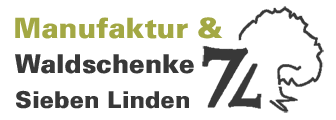Sewer Line Blockages – Causes and How to Prevent Them
The proper functioning of your home sewage system is crucial for maintaining a clean and healthy living environment. Unfortunately, plumbing problems can arise, leading to frustrating situations such as drain backup and unpleasant odors. One of the most common culprits behind these issues is the obstruction within the pipes, which can disrupt the normal flow of wastewater.
Identifying the sources of these blockages is essential for homeowners who wish to avoid the costly repairs that can follow. Elements such as grease buildup, organic waste, and foreign objects often contribute to this disruption. By understanding these factors, you can take proactive steps to enhance the reliability of your plumbing and reduce the risk of backups.
Regular maintenance and awareness of what goes down your drains are key strategies for keeping your plumbing system in top shape. Recognizing the signs of trouble early on allows you to address potential issues before they escalate into significant plumbing nightmares.
Common Reasons for Drainage Issues
Several factors can contribute to drain backup, leading to significant plumbing problems if not addressed promptly. One prevalent cause is the buildup of grease and oil from everyday cooking activities. These substances, when washed down the sink, can accumulate over time, creating thick obstructions that restrict water flow.
Another frequent culprit is tree roots. As trees grow, their roots can penetrate underground pipes, causing blockages that disrupt the normal drainage process. This issue often requires professional repair to properly remove the invasive roots without causing further damage to the plumbing system.
Foreign objects, such as toys, paper towels, and feminine hygiene products, can also lead to significant problems when accidentally flushed or disposed of incorrectly. These items can create substantial barriers within the plumbing network, resulting in drain backup and possible overflow incidents.
Additionally, periodic sediment buildup from minerals found in water can harden and narrow the pipes over time. Regular maintenance and inspection can help identify these issues early, allowing homeowners to mitigate the risk of costly repairs due to severe obstructions.
Signs That Indicate a Blockage in Your Sewer Line
Recognizing the early signs of plumbing issues can save you from more serious and costly repairs. If you notice any of the following symptoms, it may be indicative of a blockage in your drainage system.
1. Slow Drains: One of the most common indicators of a plumbing problem is slow drainage in sinks, tubs, or toilets. If water takes longer than usual to drain, it could suggest a buildup in the pipes.
2. Unpleasant Odors: Foul smells emanating from your drains can point to a blockage that is causing waste to accumulate. If you detect a strong and unpleasant odor, it might be time to investigate further.
3. Gurgling Sounds: A gurgling sound while using your plumbing fixtures can indicate that air is trying to escape through a blockage. This phenomenon occurs when water struggles to move past an obstruction.
4. Multiple Clogged Fixtures: If more than one fixture in your home is experiencing drainage issues, this could be a sign of a more serious issue within the plumbing system, possibly involving a main drain backup.
5. Water Backups: Experiencing water backflow, particularly in low-lying areas of your home, is a serious concern. This can lead to extensive damage and may require professional repair services.
Ignoring these signs can lead to severe plumbing problems down the line, so it’s vital to take prompt action. For expert help with drain backups and other related issues, visit https://bonaplumbing.com.
Preventive Measures to Avoid Sewer Line Issues
Maintaining your home’s sewage system is crucial for preventing costly complications. Regular upkeep can significantly reduce the likelihood of experiencing drain backups and other problems. Adopting a proactive approach ensures a smoother operation of your plumbing.
Regular Inspections: Schedule periodic evaluations by a professional repair service to identify potential weaknesses in your drainage system. Expert assessments can help detect early signs of trouble before they escalate into significant problems.
Mind Your Waste: Be cautious about what you dispose of down your drains. Only human waste and toilet paper should go into toilets, while kitchen sinks should avoid greasy substances, vegetable peels, and other food particles that can create clogs.
Install Drain Screens: Utilizing mesh screens or strainers in sinks and showers can trap debris and prevent it from entering your drainage system. This simple addition can save time and money on future repairs.
Maintain Your Trees: Be aware of tree roots that may invade your plumbing. Planting trees at a safe distance from your drainage lines ensures that roots do not infiltrate and cause blockage. If necessary, consider root barriers to protect your system.
Regular Maintenance: Establish a cleaning routine for your drains using safe, eco-friendly products. Professional cleaning services can also assist in removing buildup before it leads to major issues like drain backups.
By implementing these proactive measures, you can safeguard your home’s sewage network from unexpected disruptions and ensure efficient functionality.
Steps to Take When Facing a Clog in Your Plumbing System
Experiencing a blockage in your plumbing can be a significant inconvenience. Here are essential measures to consider when you notice a drain backup:
- Identify Symptoms: Pay attention to signs such as slow drains, gurgling noises, or unpleasant odors. These may indicate underlying issues within your home sewage system.
- Stop Using Affected Drains: Cease all usage of fixtures connected to the problematic area. This helps prevent any further complications or overflow.
- Attempt a Basic Clearing: For minor clogs, consider using a plunger or a plumbing snake. Ensure you follow safety precautions and wear gloves during this process.
- Check for External Issues: Look for visible obstructions around your property, such as tree roots or debris that might be contributing to the blockage.
- Use Hot Water: Pouring hot water down the affected drain can sometimes dissolve minor buildup and alleviate minor stoppages.
- Utilize Chemical Cleaners with Caution: If necessary, apply a commercial drain cleaner, but be cautious as these chemicals can damage your pipes if used excessively.
- Contact a Professional: If the issue persists, it’s crucial to seek professional repair services. They have the expertise and tools needed to address stubborn blockages effectively.
Taking immediate action can help minimize the extent of the problem and restore proper function to your plumbing system.
Q&A:
What are the common causes of sewer line blockages?
Sewer line blockages can occur due to several reasons. One of the most frequent causes is the accumulation of grease and fat, which can solidify and create clogs over time. Another common issue is the buildup of foreign objects, such as wipes, sanitary products, or other materials that should not be flushed. Tree roots can also invade sewer lines, leading to blockages as they grow and disrupt the pipes. Additionally, old or damaged pipes can collapse or develop cracks, resulting in obstructions. Regular maintenance and properly disposing of waste can help mitigate these issues.
How can I identify if my sewer line is blocked?
Identifying a blockage in your sewer line can be done by observing certain signs. Common indicators include multiple drains in your home backing up simultaneously, slow drainage in sinks or tubs, and unusual odors coming from drains or clean-outs. Additionally, if you notice gurgling sounds in your plumbing, it may suggest air trapped by a blockage. If you experience any of these symptoms, it’s advisable to consult a plumbing professional, as they can conduct an inspection and confirm any blockages present.
What preventive measures can I take to avoid sewer line blockages?
To prevent sewer line blockages, there are several proactive steps you can take. Firstly, avoid flushing anything other than toilet paper and human waste. Dispose of grease and food scraps in the trash instead of pouring them down the sink. Secondly, consider installing strainers in sinks and tubs to catch hair and food particles. Routine maintenance, such as scheduling professional inspections and cleanings every few years, can also help identify potential issues before they become significant problems. Lastly, be mindful of landscaping choices, as planting trees away from sewer lines can reduce the risk of root intrusion.
Can a blocked sewer line cause damage to my property?
Yes, a blocked sewer line can potentially cause significant damage to your property. When sewage backs up in the system, it can overflow into your home or yard, leading to water damage and contamination. This can result in expensive repairs and health risks due to exposure to sewage. Furthermore, persistent blockages can cause pipes to crack or collapse, requiring costly replacements. Timely action and preventive maintenance are crucial in protecting your property from these hazardous situations.
What should I do if I suspect a sewer line blockage?
If you suspect a sewer line blockage, it is essential to act quickly to prevent further complications. First, refrain from using water in your home, as this can exacerbate the issue. Next, try to identify any signs or patterns, such as more than one drain backing up. It’s best to contact a professional plumber who can conduct a thorough inspection using cameras and other tools to determine the exact cause of the blockage. In many cases, they can provide immediate solutions, such as snaking or hydro-jetting the line to clear the obstruction efficiently.
What are the most common causes of sewer line blockages?
Sewer line blockages can be caused by various factors. The most frequent culprits include the accumulation of grease and fat from cooking, which can solidify and accumulate over time. Tree roots also pose a significant problem as they can infiltrate pipes searching for moisture, leading to blockages. Additionally, flushing inappropriate items like wipes, feminine hygiene products, or excessive toilet paper can obstruct the flow. Lastly, the natural aging and deterioration of pipes can lead to cracks or collapses, further contributing to blockages.
What measures can homeowners take to prevent sewer line blockages?
Homeowners can implement several strategies to reduce the risk of sewer line blockages. First, it is crucial to avoid pouring grease down the drain; instead, let it cool and dispose of it in the trash. Regularly inspecting and maintaining trees near sewer lines can help manage root intrusion. Educating all household members about what can and cannot be flushed is vital – only toilet paper and human waste should go down the toilet. Moreover, scheduling periodic professional inspections of the sewer line can identify early signs of problems, allowing for timely repairs before major issues arise.


